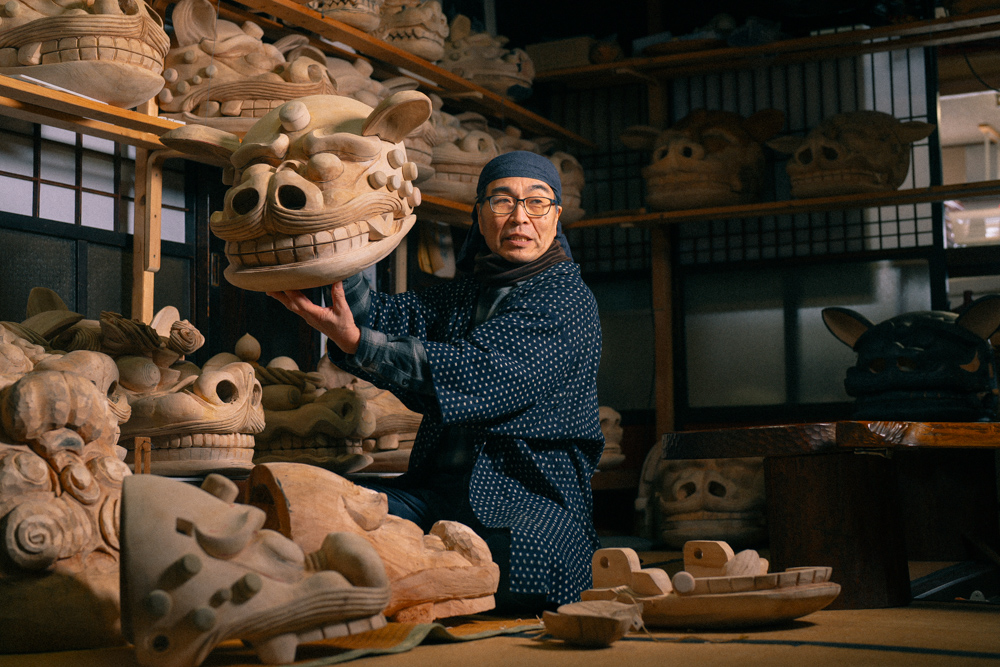
Nagai City
Nagai City, famous for its water, nature and flowers, draws you in with the sights, cuisine and experiences it has to offer.
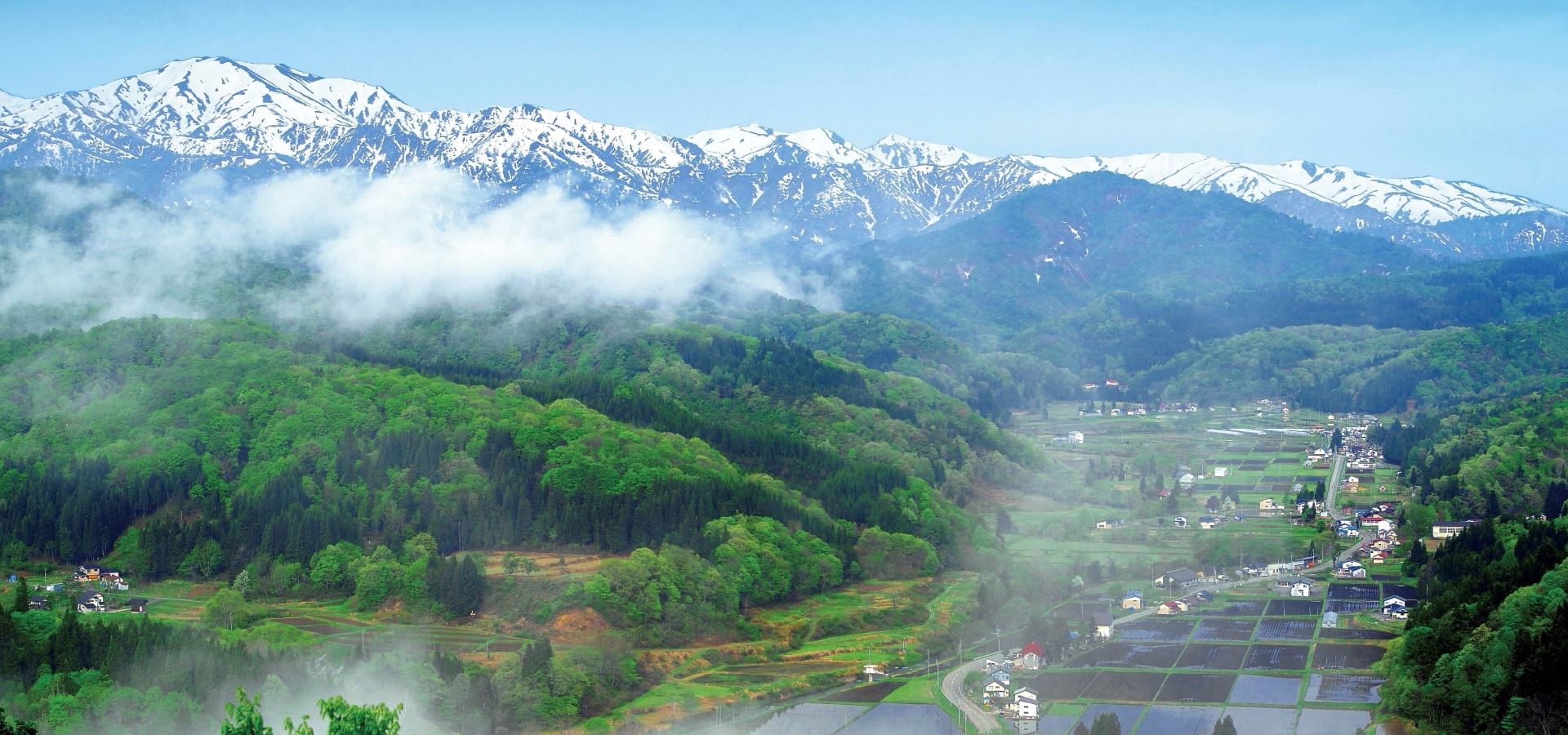
Okitama is an area of southern Yamagata, a prefecture in Japan’s northeastern Tohoku region. It consists of the municipalities and surrounding agricultural lands of the Okitama Basin, cradled to the south, east, west by vast mountain ranges. The mountains to the west and south form part of the Bandai-Asahi National Park, while the mountains to the east forms the border between Yamagata and Miyagi Prefectures. Okitama is replete with not only the quintessential scenic and culinary charms of the pastoral Japanese countryside, but also pristine wilderness. The area has been lauded as an off-the-beaten-path destination for ages, even by those who had traveled the world far and wide—international explorer Isabella Bird featured the area in her 1880 travelogue Unbeaten Tracks in Japan. To this day, the area remains a charming off-the-beaten-path destination. Okitama is located less than 2.5 hours from Tokyo by bullet train—convenient enough to visit as a day trip, but the luxurious hot springs and distinctive countryside retreats available here make an overnight stay highly recommended.
Thanks to the work of Okitama-based Yamagata Arcadia Tourism Bureau, the area is a prime location for deep Japan experiences touching on nature, spirituality, traditional craft, and more. The organization’s name is inspired by a quote from Isabella Bird, who described Okitama as “a perfect garden of Eden … a smiling and plenteous land, an Asiatic Arcadia.” Through collaboration with local artisans, outdoorsmen, farmers, and regular folk, Arcadia strives to help make the charms of Okitama accessible to visitors and enable them to experience of this modern-day idyll to the fullest.
Let us introduce you to the highlights of Okitama and five of the municipalities where Arcadia’s in-depth experiences can be enjoyed.
Cresting the final pass before descending into the basin, explorer Isabella Bird caught her first glimpse of Okitama. She recalls her joy at the sight, describing Okitama as “one of the gardens of Japan … surrounded by magnificent mountains.” Unlike Isabella, who had to traverse narrow roads and mountain passes for days on end before being rewarded with such a view, visitors nowadays can take it in much more conveniently. The breezy plains of Okitama make it an area well suited to excursions in the air, offering visitors the chance to see this magnificent panorama from the best possible vantage point. Adventurous types can enjoy hang-gliding and paragliding, while those looking for something less adrenaline-packed can enjoy a tethered hot-air balloon ride.
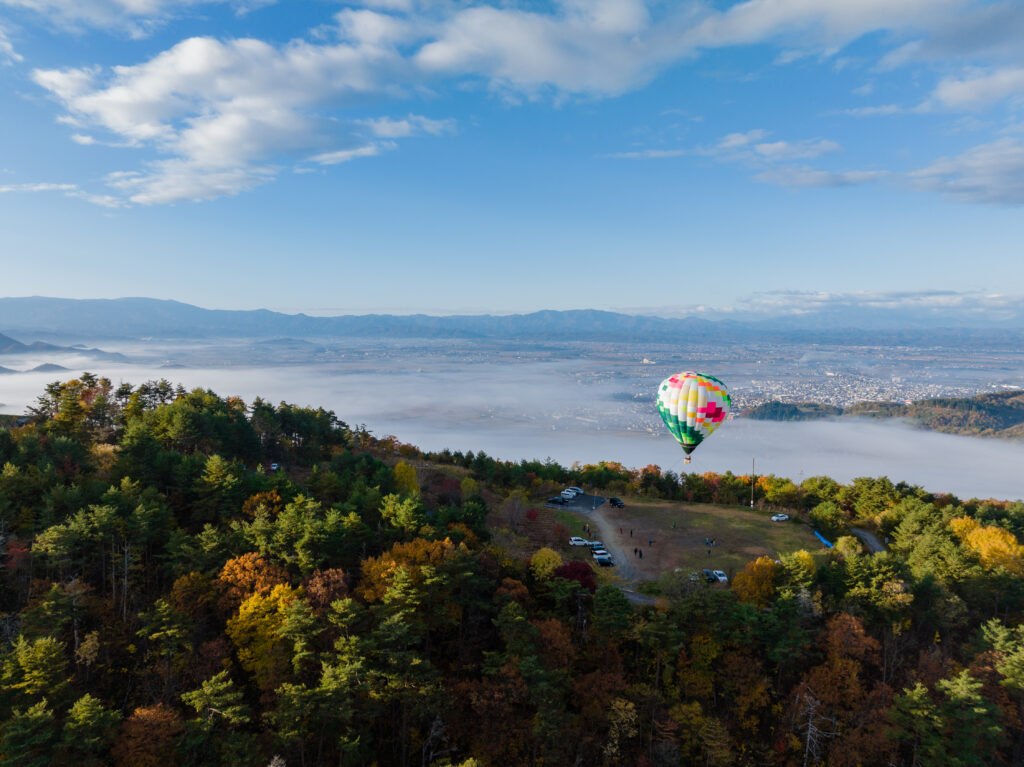
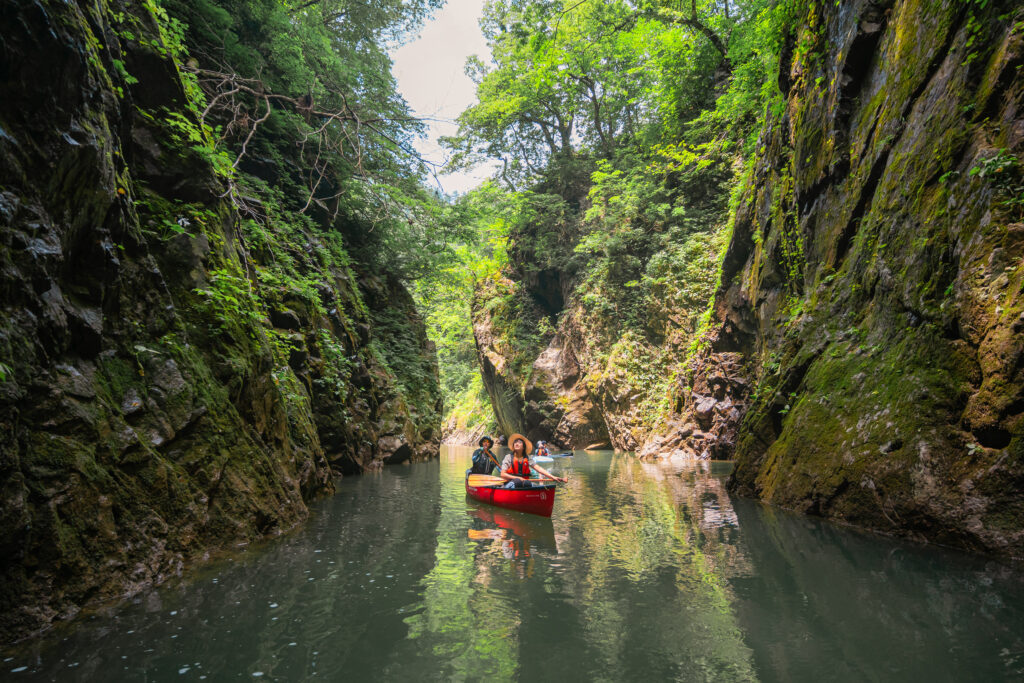
The rivers and lakes of Okitama make great spots for canoeing, kayaking, and SUP. True beginners will enjoy gliding across placid Lake Shirakawa with ease, while those looking for a bit of current will want to give Akashiba Gorge a shot. Mifuchi Ravine exudes a mysterious aura, and Lake Shirakawa is one of the only places where the surreal submerged forest phenomenon can be entered and explored via kayak or canoe.
Surrounded by mountains and home to the Iide section of the Bandai-Asahi National Park, Okitama is naturally a prime destination for hiking. All levels of hikers are welcome, from those looking for a simple forest walk to those prepared to tackle the multi-day climb to summit Mount Iide. Okitama is home to trails ascending three of Japan’s famous Hyakumeizan mountains: Mount Iide, Asahi Dake, and Mount Azuma. For mild nature walks, one of the best spots is Nukumidaira Forest—in addition to paths for self-guided walks, Nukumidaira also offers multifaceted healing programs organized by forest therapy professionals.
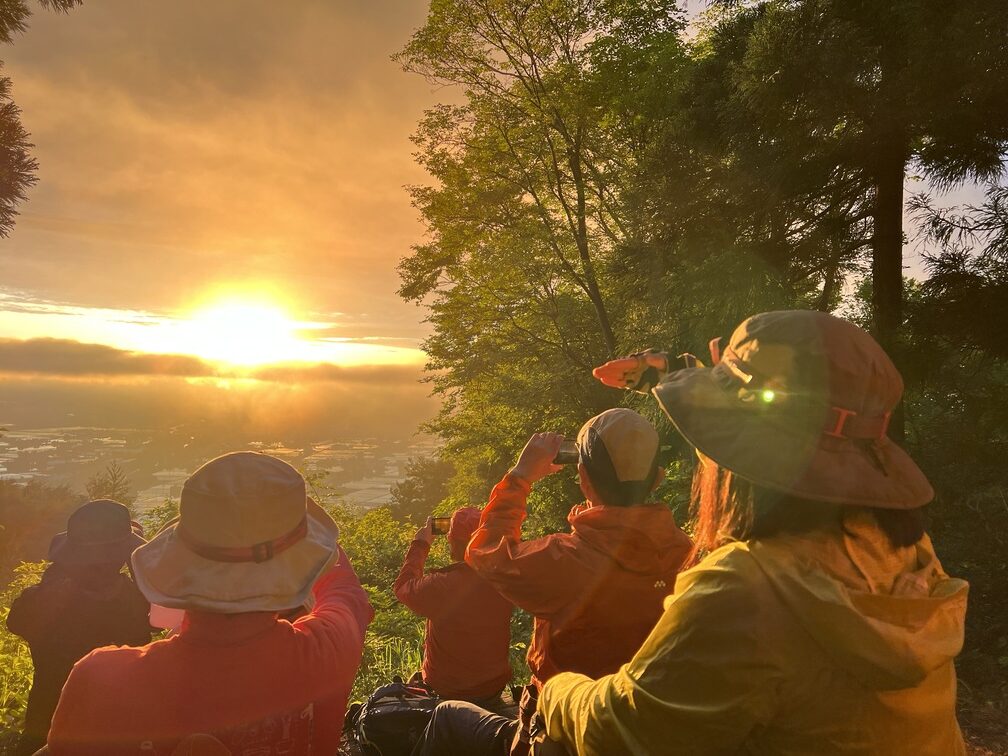
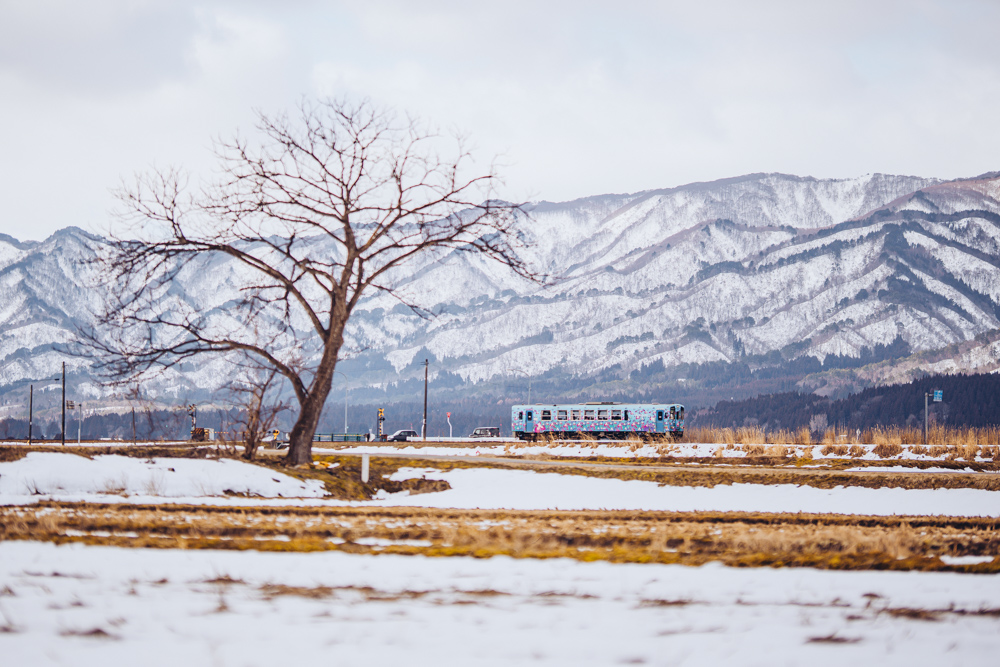
The heavy snow Okitama gets each winter shapes the natural environment and way of life. For visitors, creative use of the ample snow makes for fun winter activities like ice fishing, snow festivals, igloo making, bonfires on the snow, and giant snow mazes. Athletic types can also enjoy snowshoeing, snow surfing, and even a workshop where they can carve their own snow surfboard out of local timber. Though the ski resorts of Okitama are not large, Yokone Ski Area features a 100-meter long, 14-meter wide halfpipe so impressive that it even draws visitors out from larger, more famous ski areas.
As Isabella Bird remarked in her travelogue, Okitama is indeed “one of the gardens of Japan.” It is one of the best places in all of Japan to see cherry blossoms, as well as a number of other flowers throughout spring and summer. The Okitama Sakura Kairo is a corridor stretching from Akayu Onsen to Shirataka dotted with cherry blossom spots—some along the river, others at nearby temples, parks, and so on. Historically, Okitama’s location along the Mogami River allowed the production of safflower to thrive—for hundreds of years, Yamagata has remained the biggest producer of safflower in all of Japan. The scene of safflower fields in bloom is a historical sight that can still be witnessed here every summer. Other floral highlights of Okitama include one of Japan’s largest lily gardens and the Nagai Iris Festival.
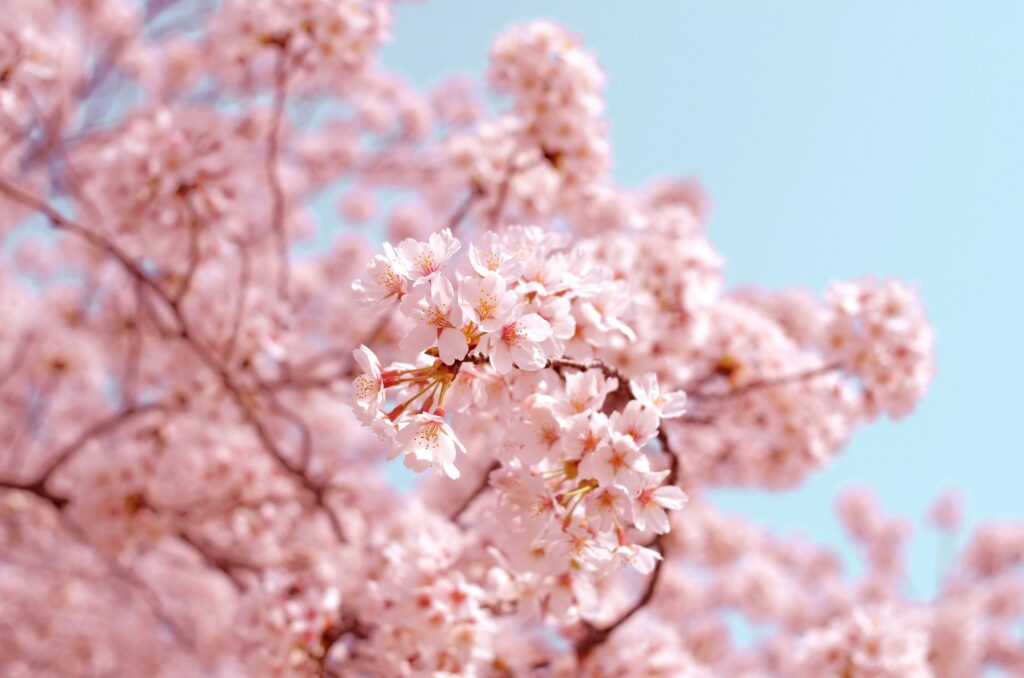
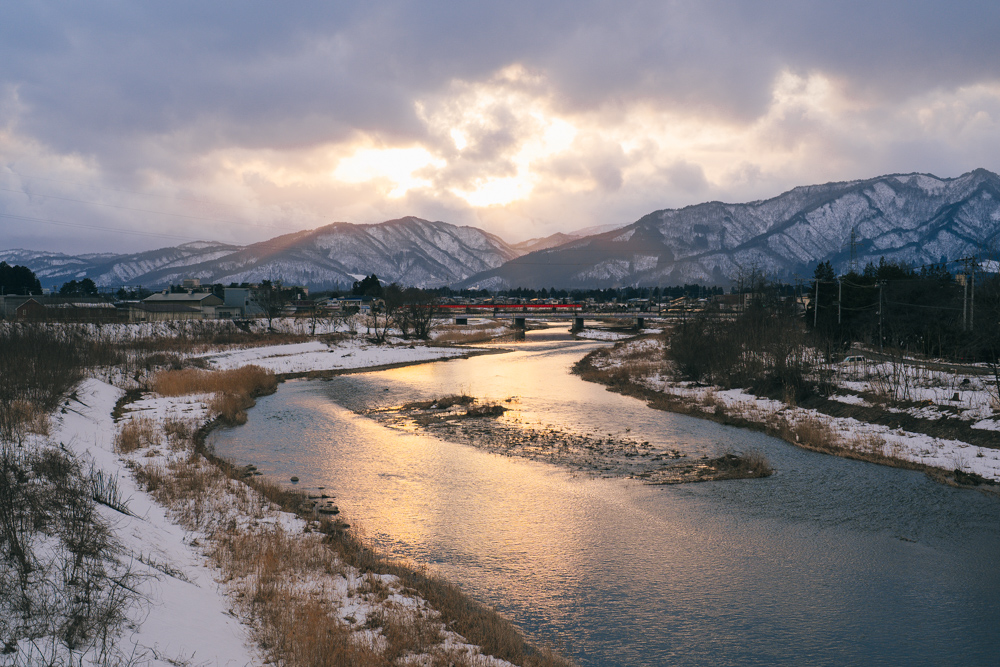
During the age of samurai, the Mogami River was a major trade route and Yamagata was the greatest producer of benibana, safflower, in all of Japan. Safflower was dried and shipped to south to the capitals, where it was used to dye fine kimono and tint the lips of geisha crimson. Other goods, such as rice and silk, were also shipped along this Mogami River route. The towns of Okitama located along the Mogami River prospered as a result, with Nagai becoming a wealthy merchant town and Shirataka flourishing as a center of production for safflower, washi, and silk. With this history being declared a Japan Heritage asset by the national government, efforts are being are being made to preserve it and make it accessible to visitors. In Nagai, historical buildings once belonging to merchants and other prominent figures have been well preserved, earning historical district the title of National Cultural Landscape. In Shirataka, fields of safflower can still be seen blooming every summer. Visitors can not only shop for safflower goods, but also try their hand at dyeing fabric with safflower themselves.
The Matagi are a people native to northern Japan. Living life in harmony with the wilderness and passing long winters in deep snow, their way of life has become increasingly appreciated in recent years. Matagi culture lives on in the mountainous area on the rim of the Okitama Basin, and the bear hunting aspect of their culture is celebrated at the Kotamagawa Bear Festival held in Oguni every spring. For visitors looking to experience the Matagi way of life more deeply, Arcadia offers programs though which visitors can meet Matagi and learn about aspects of their way of life.
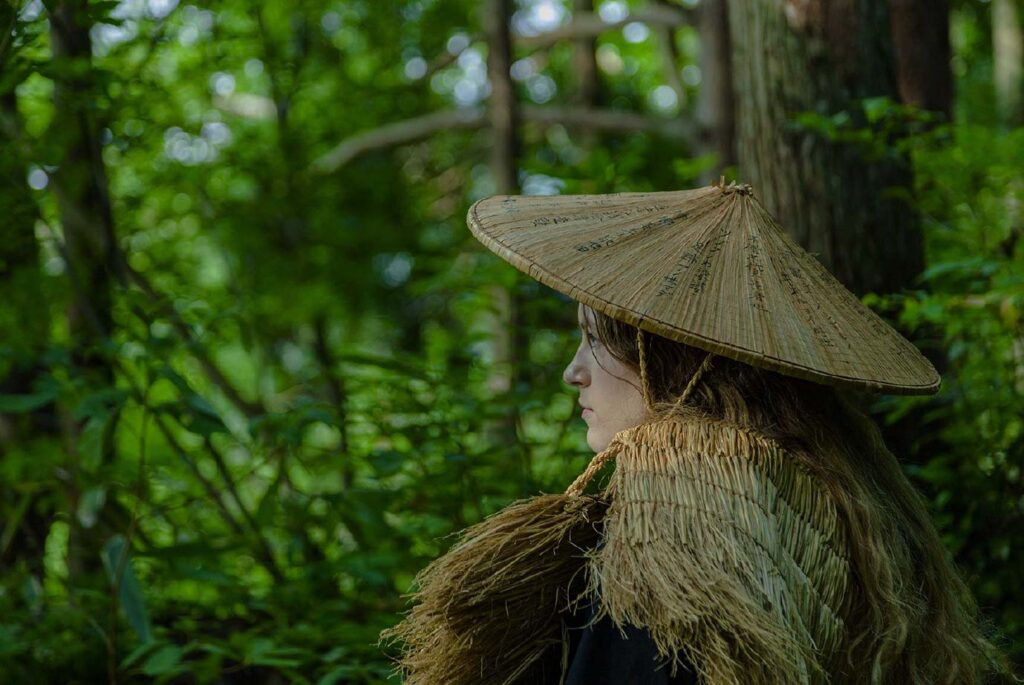
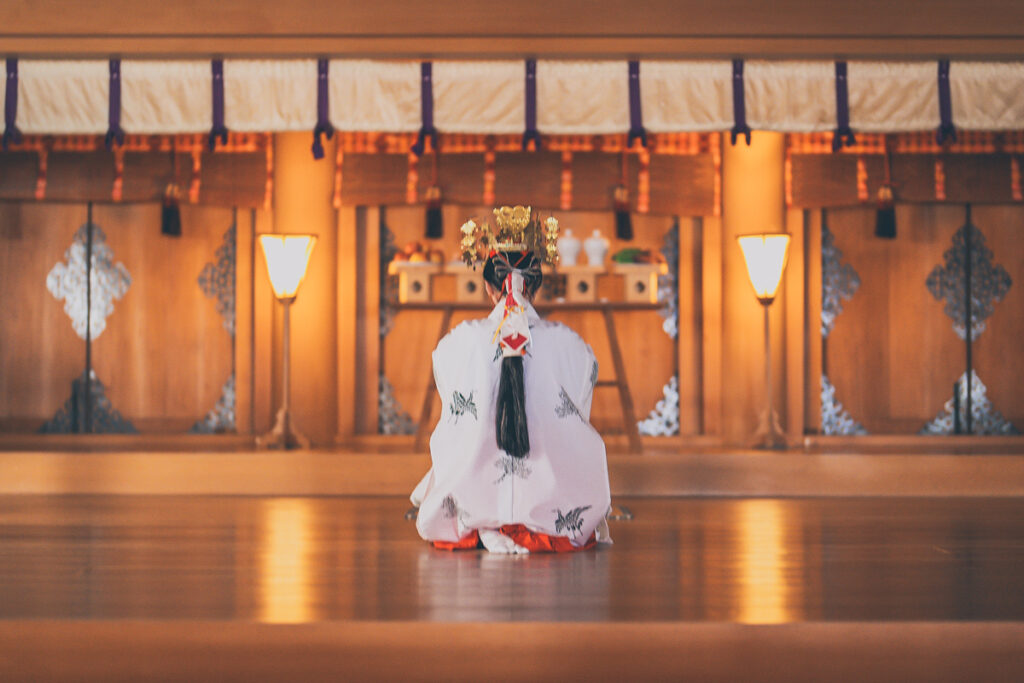
Okitama is home Kumano Taisha Shrine, one of the most revered shrines in all of northern Japan, as well as a number of other beautiful and fascinating spiritual sites and traditions. Kumano Taisha enshrines the gods Izanagi and Izanami who, according to myth, were the first married couple in Japan. As such, the shrine is known as a power spot where those looking for love come to pray. If arranged in advance, Kumano Taisha Shrine also offers visitors the extraordinary opportunity to experience being a miko, a shrine maiden, for a day. Suwa Shrine is another of the most revered shrines in Okitama. In addition to worship, visitors also flock to this shrine to meet its adorable resident owls and to see its tremendous peonies. A lesser-known point of interest is the shrine’s Maria Kannon statue, an artifact revealing the historical plight of the hidden Christians of Japan.
Some forty shrines across the Okitama region practice and preserve ritual dance as a form of worship to this day, the most well-known of which is the Kurojishi Odori (lit. “Black Lion Dance”) of Nagai. The Kurojishi Odori has been passed down for nearly one thousand years, since its conception around the year of 1063 as a dance to be performed during the reconstruction of Somiya Shrine. Kurojishi Odori involves around ten performers moving in unison under a long cloth, creating the lifelike undulations of the mythical Centipede Lion. The large wooden lion heads serving as the focal point of the dance are hand-carved works of art. The dance itself can be watched at the Kurojishi Festival held every May. At other times of year, those who make advance arrangements are invited to visit the workshop of the artisan who carves these exquisite lion heads.
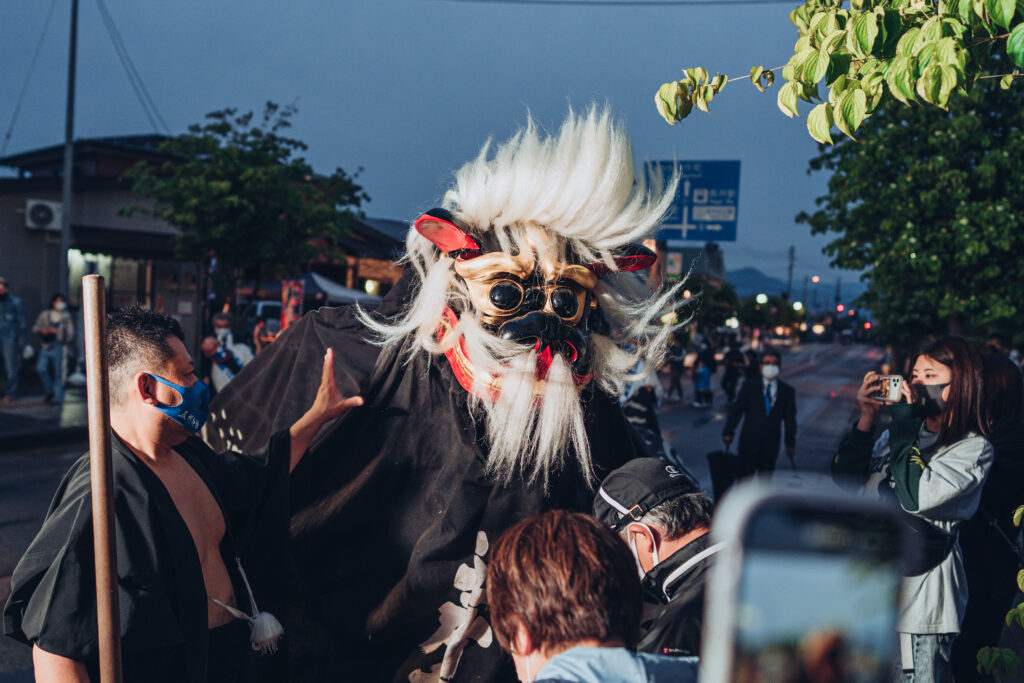

A number of crafting traditions, those refined as well as rustic, continue to flourish in Okitama. Towns along the Mogami River trade route prospered as merchant hubs and as production areas for fineries which could be sold in the southern capitals for a substantial sum. Two such crafts, Shirataka Tsumugi silk and Miyama Washi paper, have been officially recognized as a Traditional Craft of Japan and an Intangible Cultural Property, respectively. Shirataka also boasts a proud tradition of safflower cultivation, the petals of which are used as pigments. In the tiny mountain towns on the rim of the Okitama Basin, craft is beautifully rustic, shaped by what can be foraged from the surrounding wilderness. Tsuru saiku is the traditional art of weaving wild vines into items such as baskets, toys, and even fashionable handbags. Woodcraft is another longstanding art here, one which has evolved over time. Nowadays, the area offers workshops where visitors can make their own cutting boards—or even snow surfboards—out of local timber.
Kendama is a Japanese folk game played with a large wooden ball attached to a handle by string. The handle features various notches and protrusions, used to perform a seemingly endless variety of tricks with the ball. The popularity of the game has spread worldwide, to the point that there is even an annual international Kendama World Cup championship. Nagai is home to the largest kendama manufacturer in all of Japan. Kendama fans and curious sightseers alike will enjoy visiting Spike, a kendama specialty shop that not only offers all manner of kendama items, but also kendama painting experiences and lessons in how to master the game.
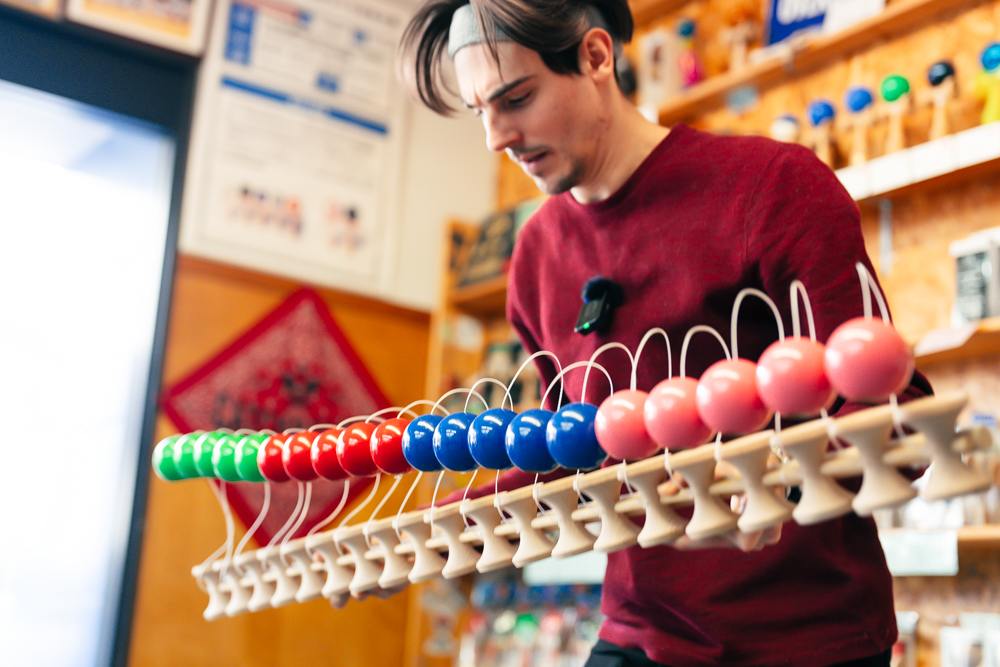
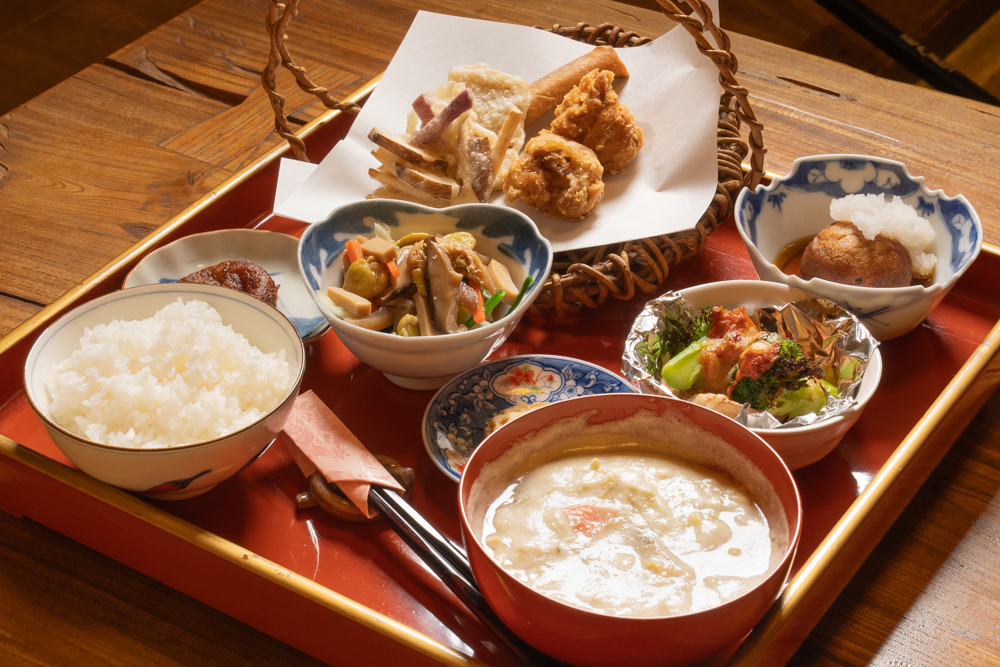
As an area boasting rivers and agricultural plains as well as mountainous wilderness, the cuisine of the Okitama area is varied and flavorful. The famous Yonezawa wagyu beef, served at top restaurants across Japan, is raised here in Okitama. While Yonezawa Beef is famous and widely available, the horse meat cuisine of Okitama remains a specialty available only locally. River fish like ayu are caught using the traditional yana method, then grilled over an open irori hearth. The fruits and vegetables of Okitama are worthy of note as well. Cultivated locally in the plains here, they are delicious in Japanese as well as Western-style preparations. In the mountains, rare native fruits and sansai vegetables grow wild. Their distinctive flavors and textures are put to excellent use in the rustic traditional cuisine of the tiny mountain towns here. Visitors can enjoy not only eating these fine ingredients, but also partaking in a number of hands-on experiences to explore them more deeply: yana fishing, sansai vegetable foraging, cooking classes, and more.
The Okitama area is home to over twenty wineries and sake breweries, including some of the best and some of the oldest in Japan. That number doesn’t even count the mom-and-pop establishments brewing their own doburoku, an old-fashioned, unfiltered farmhouse style of sake. With real doburoku so hard to find these days, Okitama is one of the best destinations in Japan to get a taste. The wines and refined sake of the area can be enjoyed via winery and brewery tours and tastings, at restaurants throughout the area, and even aboard one of the Wine Ressha or Sake Ressha event trains that run along the local Flower Nagai Line.
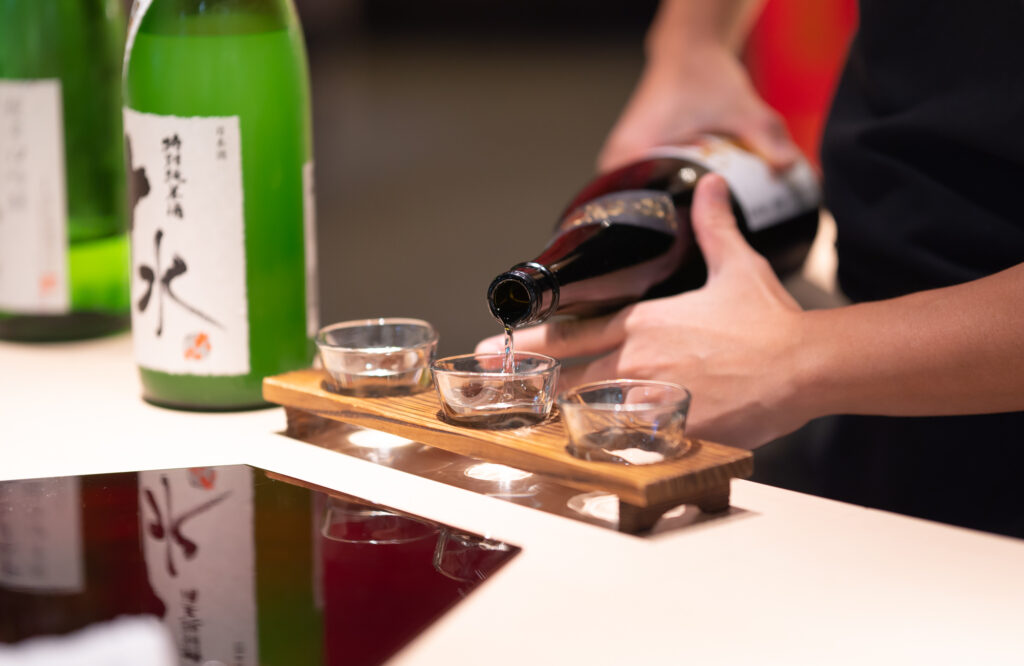
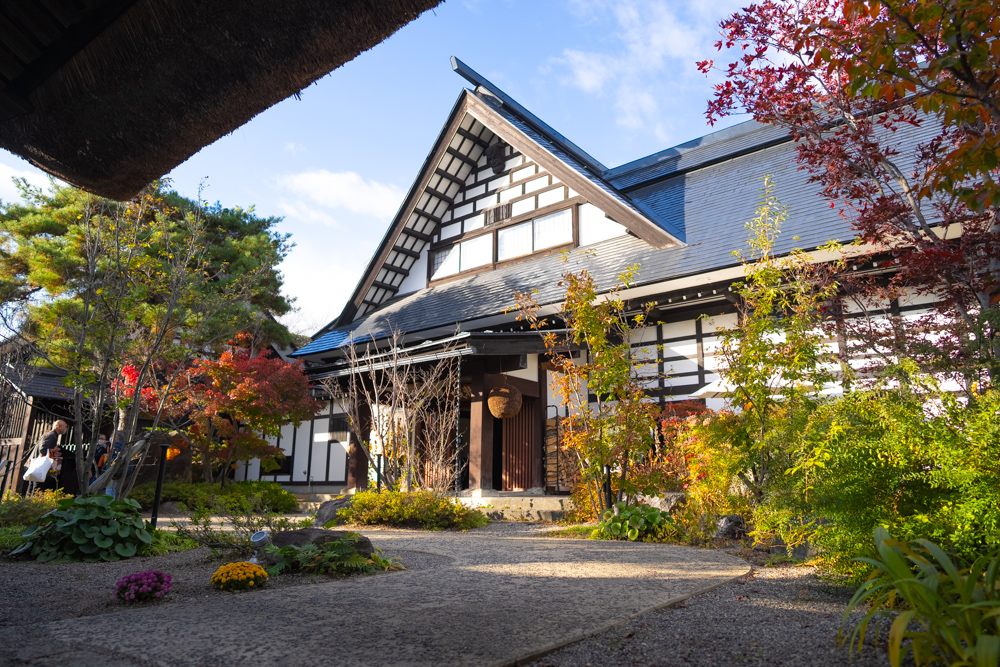
Okitama is home to town-like hot spring areas as well as rustic hot spring lodges set deep in nature. These rustic hot spring lodges make great bases for wilderness excursions, while the more centrally located town-like hot spring areas make great bases for enjoying Okitama in general. The town-like Akayu Onsen area has been known for its healing waters for nearly a thousand years. The origin of the Akayu Onsen name (lit. “Red Water Hot Spring”) dates back to 1093, when a warlord brought a severely samurai to a hot spring here in hopes that he could be healed. As the story goes, the moment the samurai entered the bath, the water turned red with blood and his wound closed. When British explorer Isabella Bird passed through Akayu Onsen in 1878, so crowded and lively were the inns of Akayu that she found that she would not be able to sleep a wink. Akayu Onsen remains popular, and nowadays even boasts its own bullet train station. Fortunately, the inns of Akayu Onsen have expanded and upgraded, so present-day guests will find their sojourn here much more restful than Isabella did.
Nanyo: The second largest city in the Okitama area. Home to Akayu Onsen and serviced by the Yamagata Shinkansen bullet train, Nanyo makes a convenient base for exploring the Okitama area. Experiences available in Nanyo include winery tours, sake brewery tours, hang-gliding, paragliding, hot-air balloon rides, and the Kumano Taisha Shrine miko experience.
Nagai: Located along the Mogami River, Nagai prospered as a merchant town during the age of samurai. The city is home to the largest kendama manufacturer in Japan, and its historical district has been designated a National Cultural Landscape. Experiences available in Nagai include kendama lessons and painting, snow surfboard making, sake tasting, cycling, kayaking, and a visit to the workshop of the Kurojishi lion head maker.
Shirataka: Located along the Mogami River trade route, Shirataka flourished as a production area for safflower, silk, and washi paper. It is also home to the one of the largest yana fisheries in Japan. Experiences available in Shirataka include yana fishing, safflower dyeing, washi paper making, paragliding, sake brewery tours, and luxurious kimono-themed overnight stays at a historical retreat.
Iide: A tiny town on the mountainous rim of the Okitama Basin and home to the submerged forest phenomenon. The town’s rustic cuisine is characterized by wagyu beef, wild sansai vegetables, and doburoku sake. Experiences available in Iide include: kayaking, canoeing, SUP, sake brewery tours.
Oguni: A tiny town serving as a gateway to the Iide section of the Bandai-Asahi National Park, and a prime location for hiking of all levels. Cuisine and craft here are admired for their rusticity. Sansai wild mountain vegetables and soba figure prominently in the cuisine. Experiences available in Oguni include: hiking, sansai wild vegetable foraging, sake brewery tours, tsuru saiku basket weaving, and Matagi cultural experiences.
See what Okitama has to offer below with our collaboration video with Jason Vong.
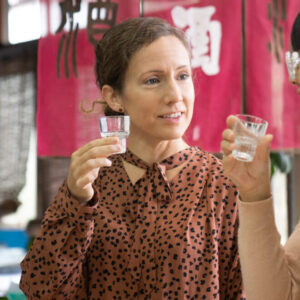

Nagai City, famous for its water, nature and flowers, draws you in with the sights, cuisine and experiences it has to offer.

Embark on a journey to experience the unspoiled wilderness of the Okitama region in rural Yamagata, Japan. Visit the places written about generations past, enjoying the sights, locals, cuisine and culture of the land.

Learn Japan’s beloved traditional game of kendama alongside the locals of Nagai City.
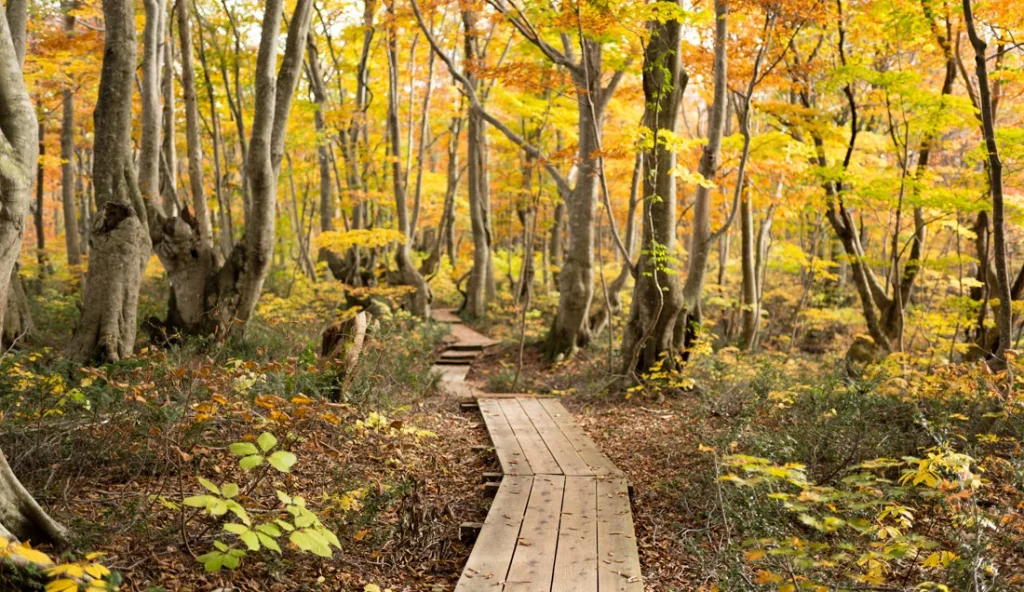
Nakajimadai is a beautiful beech forest and wetland area featuring easy nature trails. It is located at the base of Mount Chokai in Akita.
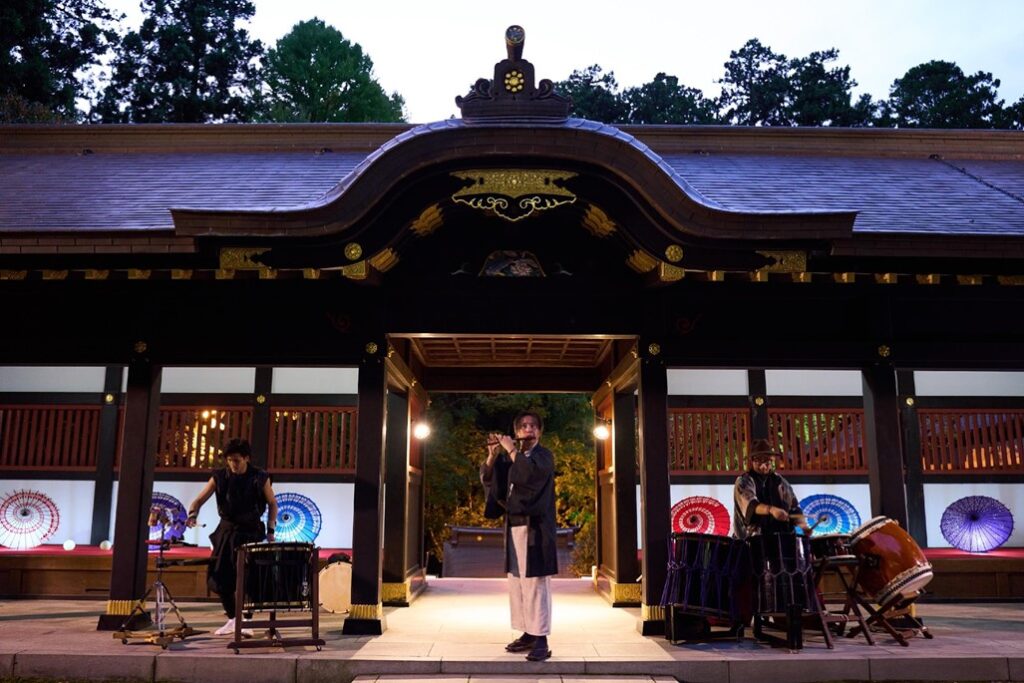
In this special experience, make a night visit the mausoleum of Date Masamune, the samurai who built the foundation of Sendai. After a special viewing of the main hall, enjoy a performance of Japanese musical instruments in a solemn atmosphere, allowing you to fully immerse yourself in the experience at this remarkable place.
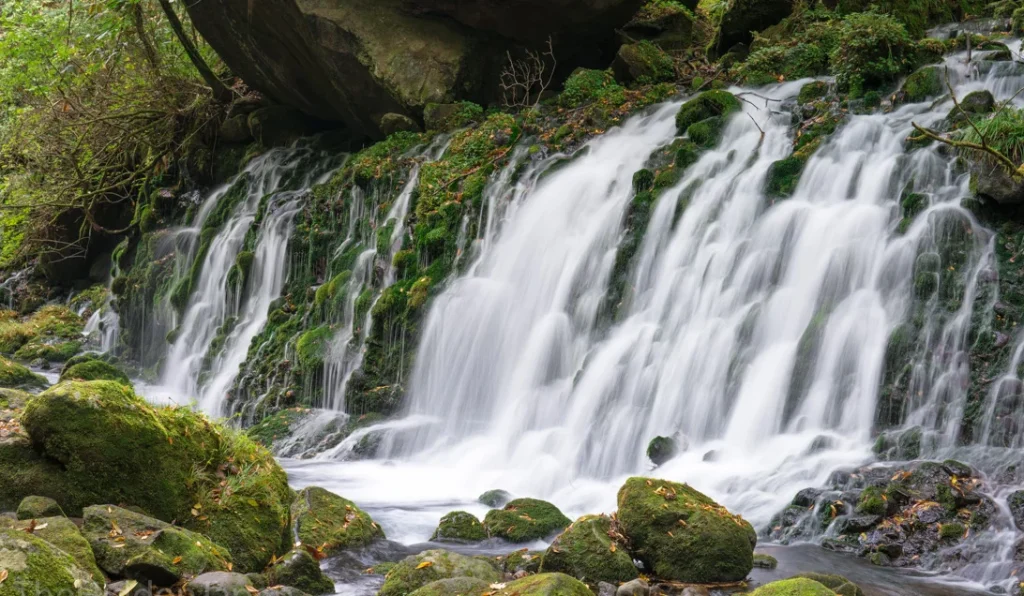
Mototaki Falls is a waterfall located in an atmospheric mossy ravine of the Mount Chokai Geopark in the Tohoku region of Japan.
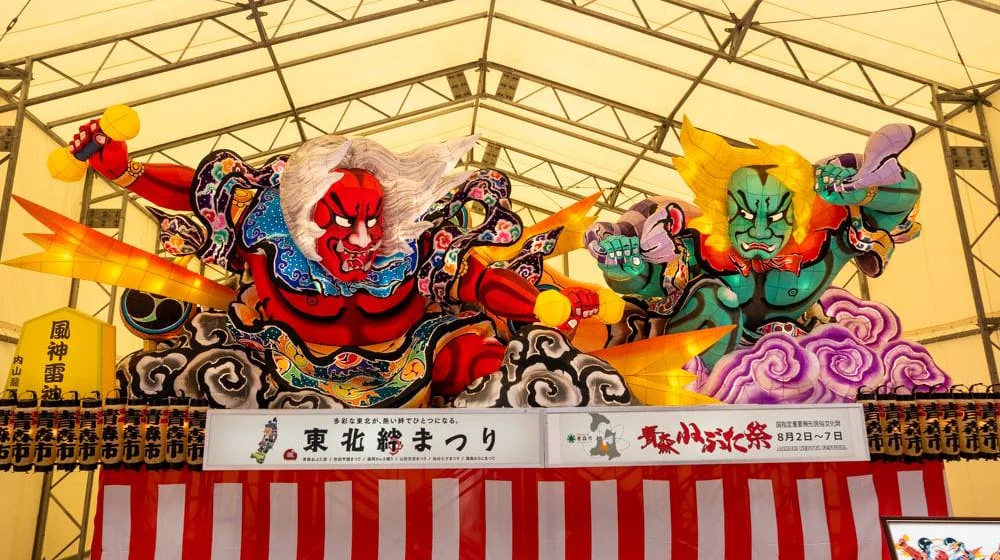
The Tohoku Kizuna Festival, a collaboration event combining the Tohoku region’s 6 most famous summer matsuri into one giant celebration!
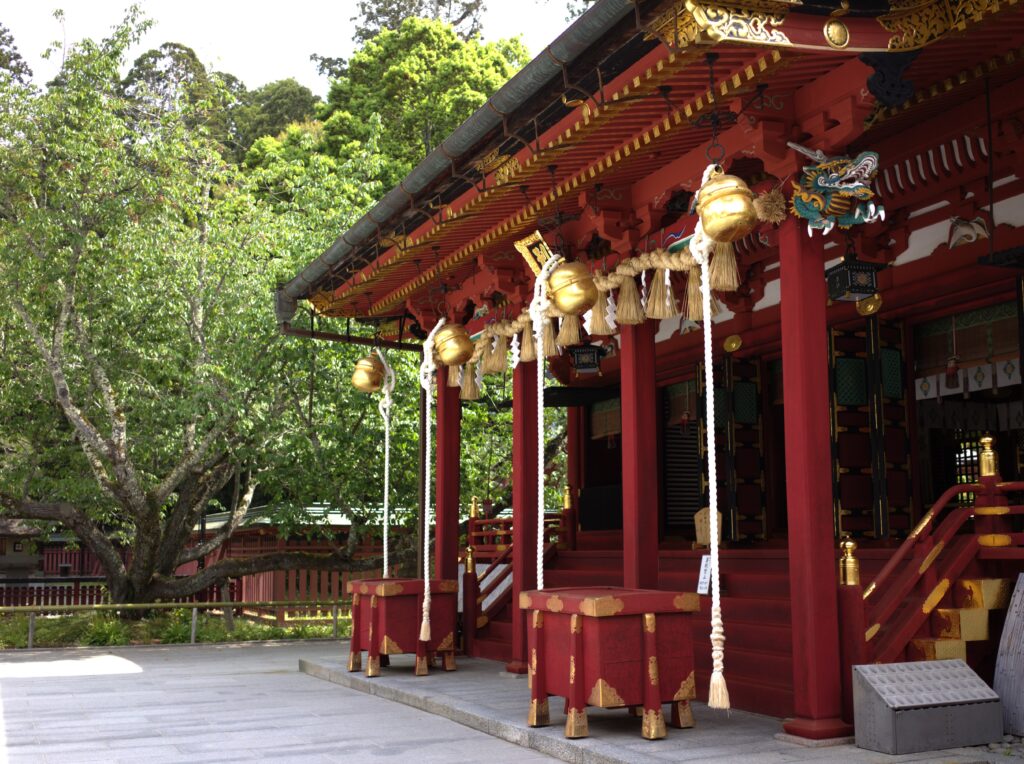
While Tokyo’s fish markets may be famous, the actual sushi capital of Japan lies far to the north in Miyagi prefecture, in the port town of Shiogama.
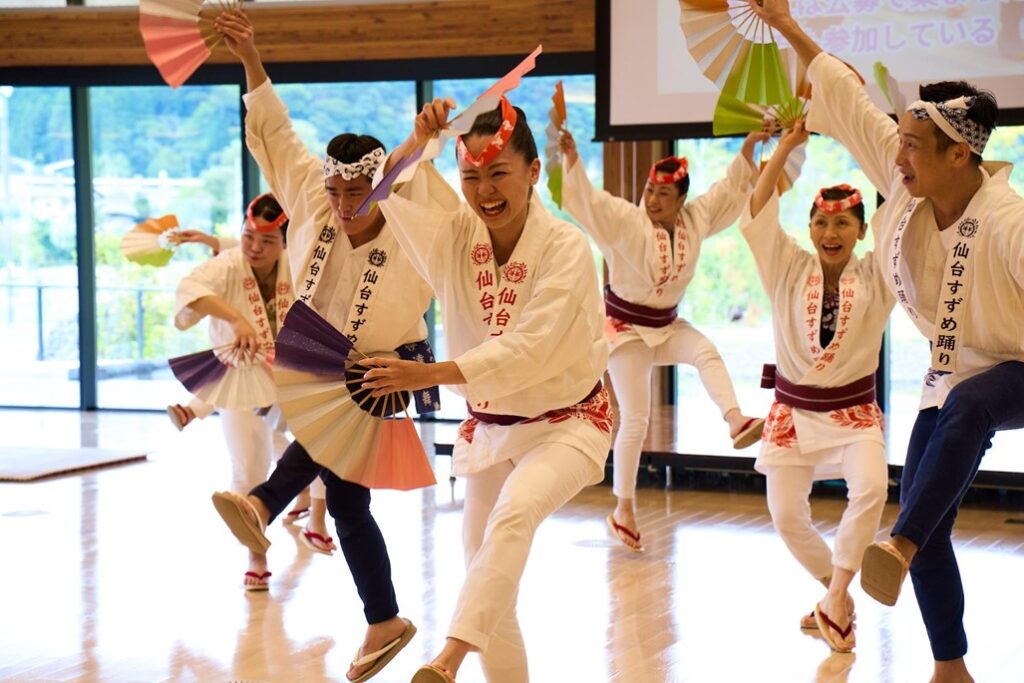
Learn the Suzume Odori, a traditional dance passed down from the times of the samurai. Enjoy the traditions of the samurai and townspeople from Sendai’s castle town days.